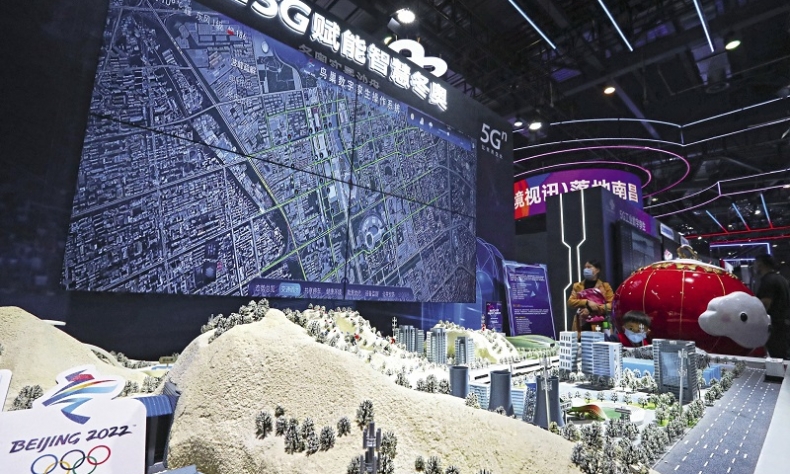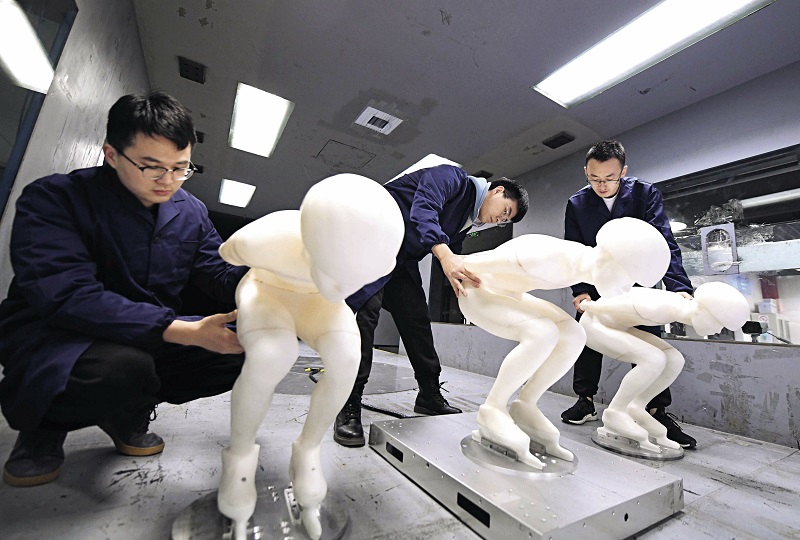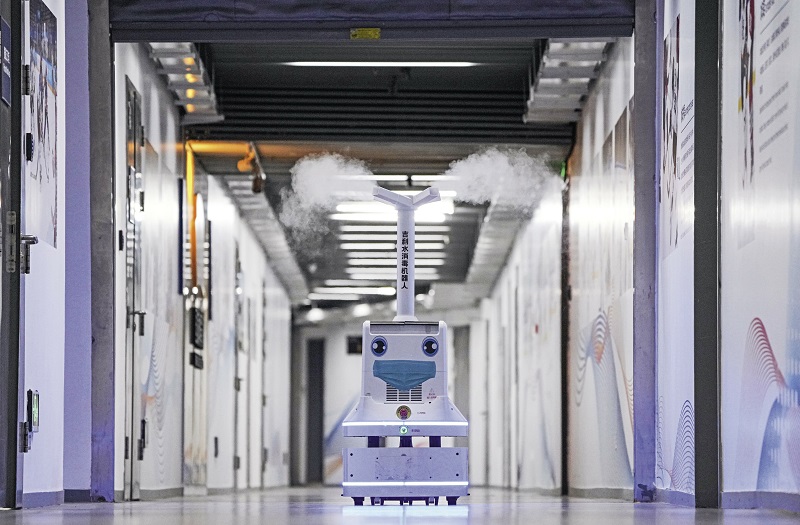Beijing 2022: A Tech-Loaded Sports Gala

A slew of advanced technologies are employed in the construction and operation of Beijing 2022 facilities.
The Beijing Organizing Committee for the 2022 Olympic and Paralympic Winter Games has declared it will make high technology a feature of the sports event. The goal is to look for better solutions to urban living and make city life friendly to the environment, business, and local community. With this in mind, the organizing committee has applied a slew of advanced technologies to the renovation and construction of sports venues, food logistics, and more.
Early Planning
The planning for a high-tech sports event started from the very day the International Olympic Committee announced that Beijing won the bid to host the 2022 Winter Olympic Games on July 31, 2015. The implementation of the vision has been headed by the municipal government of Beijing with support from various departments of the central authorities, including the Ministry of Science and Technology.
In 2019, Beijing Municipal Science and Technology Commission invited the public to contribute innovative ideas for the Beijing 2022 Olympic and Paralympic Winter Games (Beijing 2022) and launched an open bid to select service robot providers for the Games.
“The commission paid much attention to public input collection and the open bid, and worked with other parties to advance the commercial application of relevant technologies and products,” said Xu Xinchao, deputy head of the commission.
After candidate service robots were chosen, they underwent testing and pilot application for better adaption to the upcoming Games. The commission also held several meetings between hi-tech companies and the organizing committee to help these companies better understand the needs and requirements of the Beijing 2022.
According to Xu, Beijing has introduced a number of innovative products and services for the Beijing 2022. They include smart robots and solutions to smart security, display, navigation, and meteorological monitoring.
Some of the technology debuted at the 2021 Zhongguancun Forum held in September and during the 2021 week for business startups and innovation in October. They included a smart warehousing system developed by JD.com, a LED display screen by Leyard, a cloud relay broadcasting system by CDV, a map software by NavInfo, a facial recognition system by Jiuyi Technology, and a smart weather station developed by Huayun Sounding. All have been put into pilot use for the Beijing 2022.

Reality-Oriented Application
The National Speed Skating Oval, also known as the “ice ribbon,” is the only newly built venue for the Beijing 2022. Its roof was constructed using a saddle-shaped cable-net structure, of which a key component is the high-vanadium full-locked cable. When construction of the oval began in 2016, there were no Chinese manufacturers who could make this cable.
It presented China an opportunity to gain self-reliance on the technology for making the product, and China seized it. The cables used in constructing the “ice ribbon” were sourced domestically. “If China didn’t master this technology, the cost of manufacturing and transporting it from another country would have been very high,” said Li Jiulin, chief engineer of the project.
During the Beijing 2022, temperatures in the co-host city of Zhangjiakou will drop to below zero degrees Celsius, imposing a challenge for the audience. To overcome this challenge, China launched a research program on technologies to provide a warm, comfortable environment for staff and viewers at the Games.
A team headed by Cao Bin, associate professor of School of Architecture, Tsinghua University, joined this research program in 2018. “Our study has been based on human thermoregulation theories,” explained Cao. “We placed thermal manikins under various atmospheric conditions and then analyzed the surface temperature at different parts of the model and derived indexes. In this way, we can determine the degree of thermal comfort viewers might have under specific conditions.”
The cold chain industry has been a key factor in the frontline combat against COVID-19 in recent months. To stem the spread of the virus in this sector, Beijing Academy of Blockchain and Edge Computing (BABEC) developed a cold chain tracking platform, which provides effective monitoring while fully protecting data privacy. By the end of October 2021, more than 20,000 Beijing-based companies had been connected with the platform, according to the BABEC. This enabled the tracking of 560,000 tons of food and more than 200 COVID contamination cases were handled, it added.
To cater to the needs of people with hearing disabilities, Beijing Academy of Artificial Intelligence (BAAI) developed a digital news anchor who can translate news broadcasts into sign language in real time. According to BAAI’s vice director Tang Jie, the development and operation of this digital anchor are based on Wudao 2.0 large-scale pretrained language models. This technology makes the Beijing 2022 more accessible to people with disabilities.

Business Potential
The Beijing 2022 has ignited people’s enthusiasm for winter sports, creating new opportunities for businesses in this realm. Government support for research and development of winter sports equipment has also boosted growth in relevant industries.
The high-speed cableway systems that have large carrying capacity developed by Chinese companies have been applied to a demonstration program in Zhangjiakou. Breakthroughs in the technology for making and storing snow above zero degree Celsius have increased both the efficiency – reaching six cubic meters per hour – and quality of snowmaking for sports events.
“Vacancies have been filled and various weak points been mended regarding winter sports for the public, competitive winter sports, and the winter sports industry in general,” observed Ni Huizhong, vice president of the Chinese Olympic Committee and director of the National Winter Sports Administrative Center.
According to the Legacy Report of Olympic and Paralympic Winter Games Beijing 2022 (pre-Games) released in June 2021, China had intensified policy support for the industry of ice and snow activities and realized fast growth in this sector over the past five years. By the end of 2019, the value of this industry had reached RMB 423.5 billion, compared with RMB 270 billion in 2015, which marked a 56.9-percent increase.
Wang Zhigang, China’s minister of science and technology, said that China holds a long-term view about scientific and technological innovations for the Beijing 2022. The innovations are expected to not only meet the needs of the Games, but also spur the growth of relevant industries, he said.
 Facebook
Facebook
 Twitter
Twitter
 Linkedin
Linkedin
 Google +
Google +










